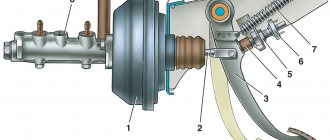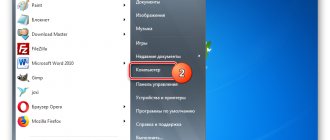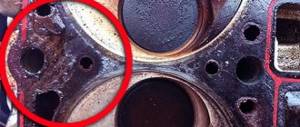What to do if pages do not open in the browser
1) Recommendation No. 1
If the pages do not open on more than one device or in one browser, it is quite possible that the channel has been interrupted by your Internet provider (or the router settings have gone wrong). Try rebooting the router and PC, check the network functionality again.
It would also be a good idea to check with your provider to see if they have a break and if everything is in order and working.
By the way, pay attention to the network connection icon: is there a red cross on it (for example).
No connections available
If this icon is on, I recommend that you read these articles:
In addition, try right-clicking on the network icon and running diagnostics. Windows 8/10 has built-in quite good internal diagnostics that can solve (or at least suggest) many causes of the malfunction.
Diagnose network problems
2) Check the settings (proxy) and plugins in the browser
The second thing I definitely recommend is to check the settings and add-ons in your browser (especially if other browsers open web pages on other devices). We are talking about plugins that can change the IP address, scan network traffic (this applies to proxies, antivirus add-ons, and pay attention to the antiviruses themselves).
For example, in Chrome, just go to the browser settings (page chrome://settings/), expand “Advanced”, and find the “System” section.
Then disable the plugins (by the way, I would temporarily recommend disabling all plugins in the browser) and cancel the entered proxy server settings. Restart your browser and try opening the pages again.
Chrome - Browser Settings (System)
By the way, turn off your antivirus and firewall during testing. Often, excessive concern for the user’s safety turns into problems for him.
Disable Avast antivirus for 1 hour
3) Trying to change DNS in the network connection settings
Another very popular reason for this problem is “failed” DNS. Typically, the ISP's DNS is used by default and no one changes it. However, if you register DNS from Google (for example), then your Internet operation will be more stable (and, possibly, faster).
How to do it:
- Press the combination Win+R, enter the command ncpa.cpl and click OK. Should open the control panel section: “Network connections”;
- in this section, open the properties of the adapter through which you connect to the Internet (example below);
Wireless Properties
then select the line “IP version 4.” and open its properties (example below);
switch the slider to manual DNS entry mode and enter: 8.8.8.8 and 8.8.4.4, as in the screenshot below. Save the settings and restart your computer.
Use the following DNS addresses
- After the operation is completed, the browser should start displaying pages.
- press the Ctrl+Shift+Esc button combination (the task manager will open);
- then click “File/run new task”;
- enter the CMD command;
- check the box that the task must be run as an administrator;
- click OK. See example below.
4) Clear DNS cache, reset network parameters
To reset network settings, you must open a command prompt as an administrator. How to do it:
Fixing the problem
The main reason why this happens is problems related to DNS, but why these same problems arise is another question.
Changing DNS
Often, this is what helps solve the problem. You need to register DNS from Google, and for this:
- You need to go to network connections. The easiest way to do this is by pressing a key combination such as Win + R and entering the command ncpa.cpl into the “Run” console. Then press Enter.
- A window will open where, using the right mouse button, you need to open the properties of the Internet connection that will allow you to access the Internet.
- In the console that opens, select “IP version 4 (TCP/IPv4)” and open its properties.
- Now you should register DNS, as in the screenshot.
Now restart your PC and the problem should go away.
DNS cache
It happens that you need to clear the cache to do this:
- Open a command prompt console as an administrator. And to do this, you need to right-click on the Windows icon in the lower left corner and select “Windows PowerShell (administrator)” or “Command Prompt (administrator)”.
- In the window that opens, enter the command ipconfig/flushdns and the cache will be reset.
Error in hosts file
Sometimes, due to incorrect settings of this file, similar problems can occur. This is, of course, unlikely, but it happens and is worth checking. To do this, open this file, which can be found at the following address System32\drivers\etc; you need to open hosts with notepad. It should look like the screenshot, if something is wrong, correct it.
The DNS client is not working correctly
Why doesn't the browser load pages? If you have not reinstalled Windows for a long time, then the reason why the Internet is available, but not a single site opens, may be a malfunction of the DNS client. To check this:
- Using the right mouse button, you need to click on the computer icon on the desktop and select “Manage”.
- In the window that opens, select the “Computer Management” section, and then “Services”.
- In the list, find the service called “DNS Client”, it should be in the “Running” status. Just in case, click on the restart button at the top.
Actions of viruses
If the Internet is working, but the browser does not want to load a single page on the computer, the culprit may be viruses or parasites that penetrate the system and cause harm. In this case, it is recommended to download special utilities and check the system with them: AdwCleaner, Malwarebytes Anti-Malware Free, Zemana AntiMalware.
Registry check
If you encounter difficulties while opening web pages, the first thing you should pay attention to is the registry. Check it and if there are errors, edit its contents. How to open the registry? Theoretically, you can search the system drive. However, a faster option is to get there through the command execution utility. Press Win + R, then type regedit and confirm with the Enter key. An editor will appear on your screen. Check out what the registry contains. On the left are the sections, one of them is HKEY_LOCAL_MACHINE. Sequentially select the following subsections: first SOFTWARE, then Microsoft, followed by Windows NT, then CurrentVersion and finally Windows. On the right you will see the parameters. You should be interested in the AppInit_DLLs parameter. Make sure its value is empty. If it represents a file path, then erase all the text. Editing is available using the right-click context menu.
The Internet works, but the browser does not load pages. Can't access websites
In this article we will try to figure out why and why the browser stops loading pages and accessing different sites. Despite the fact that the Internet continues to work normally, judging by the connection status in the notification panel. In this case, it doesn’t matter at all whether you have a PC or a laptop. It has Windows 10, Windows 8, or Windows 7 installed on it. And it doesn’t even matter how you connect to the Internet: via cable directly, or via a Wi-Fi router.
The message in the browser may differ. When you see an error in your browser (Opera, Chrome, Mozilla Firefox, Microsoft Edge) that the site cannot be opened, the page cannot be displayed, or there is no Internet connection, then first of all pay attention to the status of the Internet connection. Icon on the notification panel. Also in the error description there may be a message that there is a problem with DNS. In this case, you can see the solutions in the article: The DNS address could not be found.
If there is some kind of red cross or yellow exclamation mark next to the icon, then the browser does not load the pages due to lack of Internet connection. And this problem needs to be solved. First of all, reboot your computer and router (if you have a connection through it). You may also find these articles useful:
- Without internet access in Windows 7
- "Connection Restricted" in Windows 10
When the Internet is connected and working, the icon should look like this:
Usually, when there is Internet but sites do not load, then programs such as Skype do not lose the Internet connection. Pay attention to this. And if your Internet works (the connection status is as in the screenshot above), but does not access sites through different browsers, then try to apply the recommendations that I will write about below in this article. And further:
- If you are connected through a router, check whether the sites load on other devices. If not, then reboot your router. You can also connect the Internet directly to your computer and try to access a website. Perhaps this problem was caused by the provider.
- If the problem is only on one computer, then it is important to remember when and after what it appeared. For example, after installing some program.
- Restart your computer and run Windows Network Diagnostics. You need to right-click on the connection icon and select “Diagnose problems.” You can write about the results in the comments.
- Try visiting different pages. Perhaps the problem is in one specific site. Also try different browsers.
The problem is clear, let's move on to solutions.
Hosts file
Testing for problems associated with this file is carried out using Skype. If it works, but one or all browsers do not, then you need to change the text in the hosts file. In practice, this problem only affects certain sites, so check a few different links. You can find this file using this path: C:WindowsSystem32driversetc. Its peculiarity is the absence of any extension.
Blog about modems, routers and gpon ont terminals.
Today I want to talk about a problem that often occurs among novice users who have relatively recently connected to the global network and have not yet gotten the hang of it. There is, however, another category that can use something for years and not delve into the intricacies. But sooner or later problems may arise and you still have to figure it out. The essence of the problem is that at one point the user notices that the browser does not open sites and pages, but the Internet works - Skype, ICQ, Viber function perfectly. It is clear that contacting the provider’s technical support will also not yield any results - faults with the communication channel will not be detected. What to do in this situation? The only reason that the Internet works but sites do not open is problems with DNS. But the primary sources can be several factors.
1. Incorrect DNS server address specified 2. Requests are blocked by the security system 3. Problems with the Windows DNS client
Let's take a closer look at them.
Invalid DNS address or server unavailable
Among ordinary ordinary consumers of broadband access services, few people know what DNS is and why it is needed. Even less think about which server to register. In fact, this is a serious point, on the correct configuration of which normal, convenient and comfortable work on the Internet entirely depends. In short, Domen Name System - abbreviated as: DNS is a special hierarchical domain name system, thanks to which a computer or laptop receives the information it needs about the site the user is accessing, namely the IP address of the node on which this or that is located resource or portal. It works on the basis of special servers that are installed at each level of the system hierarchy. Each more or less large provider has its own DNS server and more than one. Typically, its address is given to subscribers automatically when they connect to the network and then they work quietly. But it may happen that the user has messed around with the connection settings, or the provider’s DNS server begins to shut down. Carrying out basic diagnostics is not difficult - all tools are available in the basic Windows set. Open a command prompt with administrator rights.
In the black console window that appears, enter the command:
Press the Enter button and wait for the result. Here is an example of the normal execution of such a request for Yandex:
If there are any problems with the server, then it will either display that the request timeout exceeds, or “No response from the server”:
Accordingly, in this situation, browsers do not work and cannot open pages. At the same time, those services that access the Internet directly via IP address will function perfectly. In this case, it’s worth trying to send the same request to some third-party service. For example, public DNS from Google is 8.8.8.8. Then the command will look like this:
If the correct result is obtained and the utility does not generate an error, enter the addresses of public servers in the settings of the network card of your computer or laptop. To do this, open the Windows 10 settings:
Go to the “Network and Internet” section. In the menu that opens on the left, select the connection type: Ethernet (as in my example) or WiFi:
And in the right part of the window, click on the link “Configure adapter settings” to get to the list of network connections of the operating system.
Note: If you have Windows 7, 8 and 8.1, then in order to open network connections, press the Win+R key combination, enter the command ncpa.cpl and press the Enter key,
Now you need to find the connection through which Internet access is organized and right-click on it. In the context menu, select “Properties”. In the window that appears, double-click on the item “IP version 4 (TCP/IPv4)” to get to the protocol parameters:
Here you need to check the “Use the following DNS server addresses” checkbox so that the fields below become active. We indicate the Google server as the preferred one - 8.8.8.8, and the alternative will be the analogue from Yandex - 77.88.8.8. Save the settings and check the result.
DNS problem
If the browser does not open pages precisely because of DNS, then this reason can be corrected quite easily. Launch the command line via Start – System Tools or by entering the command “cmd” in the search bar of the Start menu. To do this, several packets are sent towards the server of any working site. Experts call this action “ping.” And all because the command is called ping. For example, enter ping google.com and press Enter.
If in response you received several lines with the parameters “number of bytes”, “time” and “TTL”, then everything is fine. If a message appears that the site could not be detected, it is probably all about the DNS. You can be 100% sure of this by entering the ping 8.8.8.8 command. Got a normal response? If yes, then the problem is in DNS.
This inaccuracy in the properties of the Internet connection is corrected. Disable automatic completion and enter the value manually. Enter the value 8.8.8.8 in place of the primary DNS server, and 8.8.4.4 in place of the alternative one. Afterwards the Internet should work the same way as before.
Problem Analysis
The first step is to make sure that Internet access is really present and working correctly. As a rule, other programs that use the network work in this situation (Skype, ICQ, etc. are available).
But there are cases when they are not there, and it is not possible to install these applications. In this case, you can check the network operation using the command line. To do this, press the key combination Window + R and enter cmd in the window that appears. A terminal should appear in front of the user, where they enter the ping command (then you can try to enter the address of the Yandex website, for example, you will get - ping www.yandex.ru). If the described problem occurs, this command will display a message indicating that it is impossible to connect to the resource. But if you enter ping 8.8.8.8, a message about the successful status will appear.
The reasons for the problem when sites do not open can be different. This may be related:
- problems with the DNS service;
- the impact of viruses and malware;
- incorrect proxy server settings;
- incorrect configuration of the host file (What is the hosts file for in Windows 7).
Viruses
Malware can interfere with the normal operation of browsers. As a rule, in the presence of viruses, Skype, just as in the case of the previous problem, will continue to fully perform all functions.
Viruses are often aimed at specific programs. Some of them are intended for specific browsers. At the same time, it is very difficult for the user to independently detect the presence of a Trojan or other type of virus on his computer. Therefore, you cannot do without the help of special utilities.
A program called antimalware, which effectively fights malicious files, can be a savior for the user. Most of these programs are not free. More precisely, certain functionality is available to everyone, but only its buyers receive the full version of the program. Only purchased and timely updated antiviruses can guarantee 100% protection.
This type of virus such as Trojan.Winlock specifically blocks network access and certain functions of web browsers: Opera, Chrome, Yandex, etc. Many users have already encountered an unpleasant situation when a request to enter an SMS appears on the screen in order to unlock further work with the browser . It is almost impossible to close either the deposit or the window with a standard click on the “cross”. You will have to use the help of the Task Manager. Be sure to scan your system with an antivirus after this.
Sometimes malware blocks popular sites. Users of VKontakte and other social networks often encounter this difficulty. They block viruses and sites that host anti-virus content.
Thus, the only right decision for the user is to take care of protection for the computer in advance. Popular antiviruses are the best PC protectors. Although they are paid, they cope with their functions with “five plus” results. Experts advise not to save money on information security, especially for those who store important data on their computer.
Free antivirus programs are suitable for those who do not use their computer as a work tool.
DNS Service Issues
A common culprit in situations where the browser does not open sites, but Internet access is not blocked, is the operation of the DNS server. This problem can be determined in the way described above, when it was necessary to open the command line and ping the address of any resource by domain name and ip.
Each site has its own location identification number, called an IP address. There are many different resources on the global web and they all have a unique address. In order not to torment a person’s memory, it was invented to create a service that, when entering the name of a site (for example, Yandex), could determine its IP address.
Sometimes situations happen when the provider's DNS server does not work or the network settings in the router or computer are lost. The reason why website pages do not open has been clarified; it remains to explain how to solve this problem.
There are two possible solutions. If the network settings are lost, then here you need to correct them to the correct ones and, if necessary, reboot the equipment. In the event of a DNS failure, you can change the settings on the network adapter. To do this, click “Start” - “Control Panel” - “Network and Internet” - “Network and Sharing Center” - “Change network adapter settings.” Here, on the “Connected to a local network” icon, right-click and select the “Property” option. Then select the TCP version 4 item and in the window that appears, select the “Use the following DNS addresses.” Below in the window, enter 8.8.8.8 (public Google DNS server) or 77.88.8.8 (public Yandex DNS). Then click the “Save” or “Apply” button.
To check the operation, you can open the command line (Window + R – cmd), then you need to check the connection (for example, with Yandex). Enter the command ping www.ya.ru. If you do the right thing, you will be able to see information about the server response time below.
Clearing DNS cache
This option is the most popular and most workable solution to the traffic problem. Almost always, due to DNS problems, sites do not load when the connection is working.
Checking proxy and firewall settings in Windows
The fix requires running a command prompt as an administrator and entering a command such as ipconfig/flushdns. In this case, the DNS cache will be completely cleared, which may be a way to improve the operation.
Note! After this, it is recommended to restart the laptop, although the system itself will not ask for this.
Disabling proxy
You can try disabling the proxy server in the connection and browser settings. There is only one way to do this:
- Open the “Control Panel” section (in Windows 10, you can use search in the taskbar for this).
- If “Category” is set in the “View” field in the control panel, then you need to go to “Network and Internet” - “Browser Options”, if “Icons” is set, immediately go to “Browser Options”. Open browser properties in the control panel.
- Next, find the “Connections” tab and enter “Network Settings”.
- You should uncheck the “Proxy server” section so that it is not used. In addition, if “Automatic detection of parameters” is set in the “Automatic configuration” section, then you need to disable this checkbox, since it can lead to the fact that the proxy server will be used even when its parameters are not set manually.
- Confirm and save the changes made.
Blocking Internet access on a computer
In this case, the proxy server in the operating system and browser will be disabled.
Important! If the settings you made do not help, then you should return all the parameters back.
Checking for Registry faults
There is another “fix” that sometimes helps fix the Internet connection.
Important ! You need to make changes to the Registry very carefully, since an incorrect entry can crash Windows.
We perform the following actions:
1. Open the Registry Editor: keyboard shortcut Win + R > Run.
2. Regedit > Input ; The Registry Editor window will open.
4. Look for the HKEY_LOCAL_MACHINE . Click on the triangular arrow and expand the contents;
5. Sequentially open SOFTWARE – Microsoft – Windows NT – CurrentVersion – Windows; (full address – Computer – HKEY_LOCAL_MACHINE – SOFTWARE – Microsoft – Windows NT – CurrentVersion – Windows)
6. We need the AppInit_DLLs . If there is any inscription Value
7. We perform the same sequence of actions, but in the HKEY_CURRENT_USER .
8. Reboot the PC
9. We try to open any site through the browser again.











